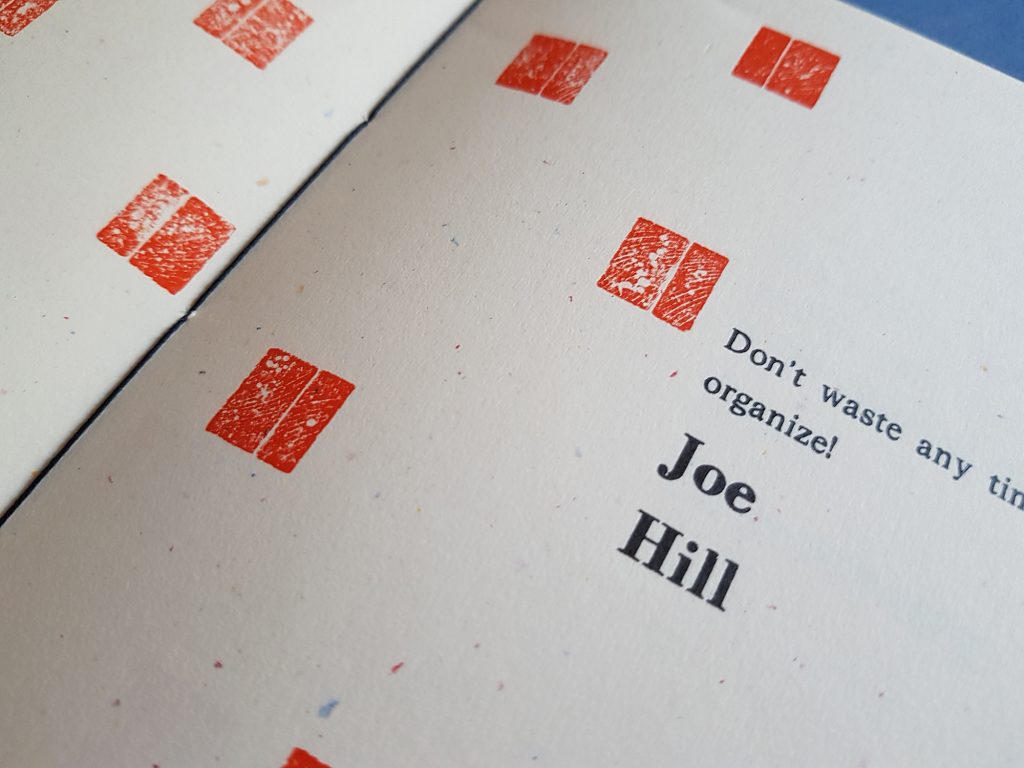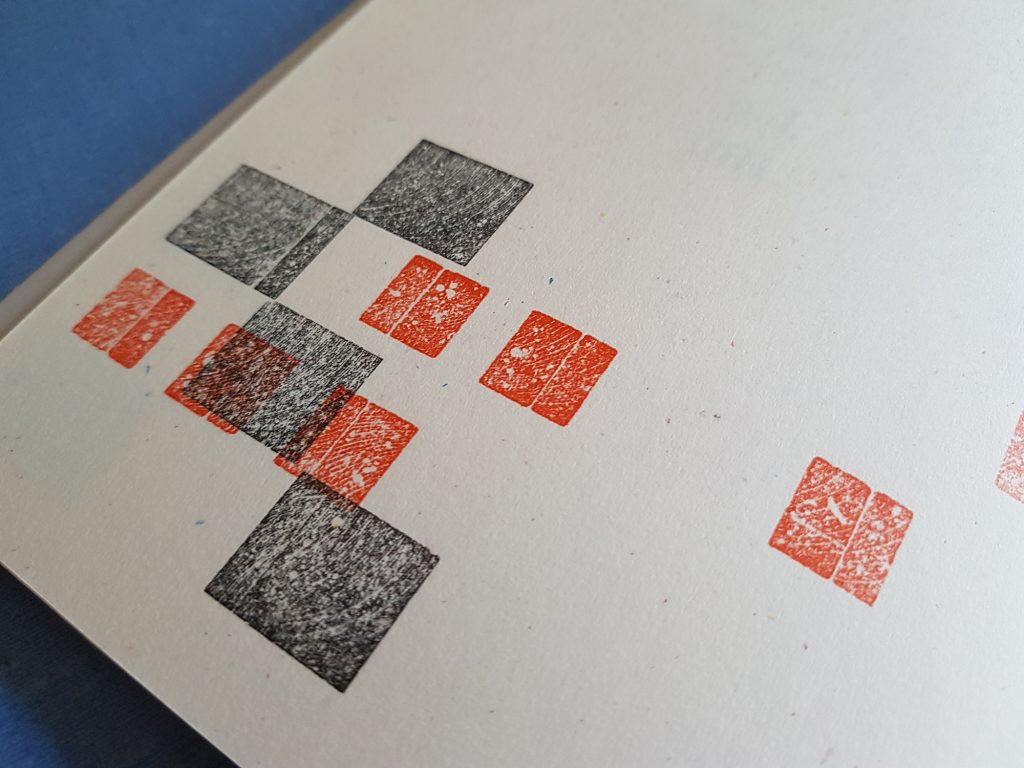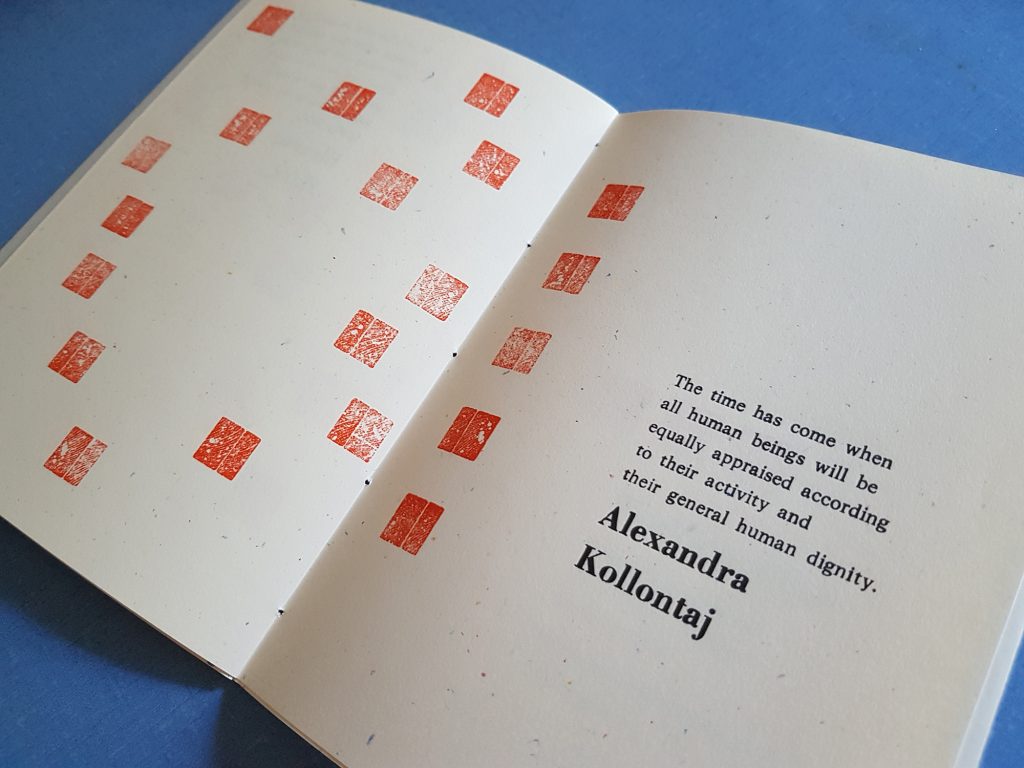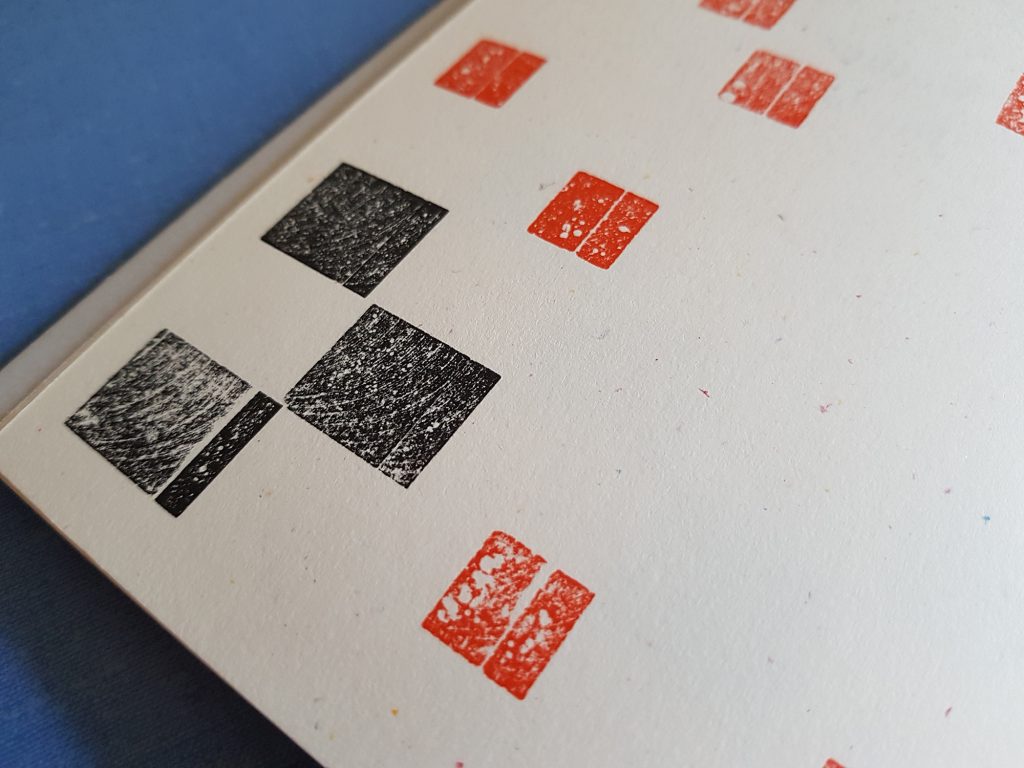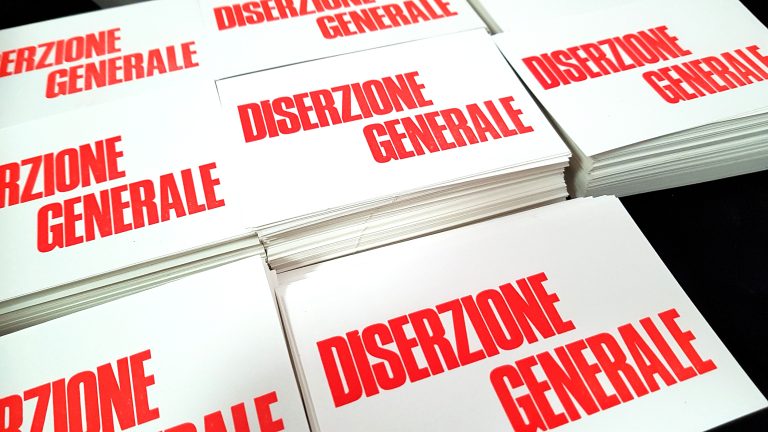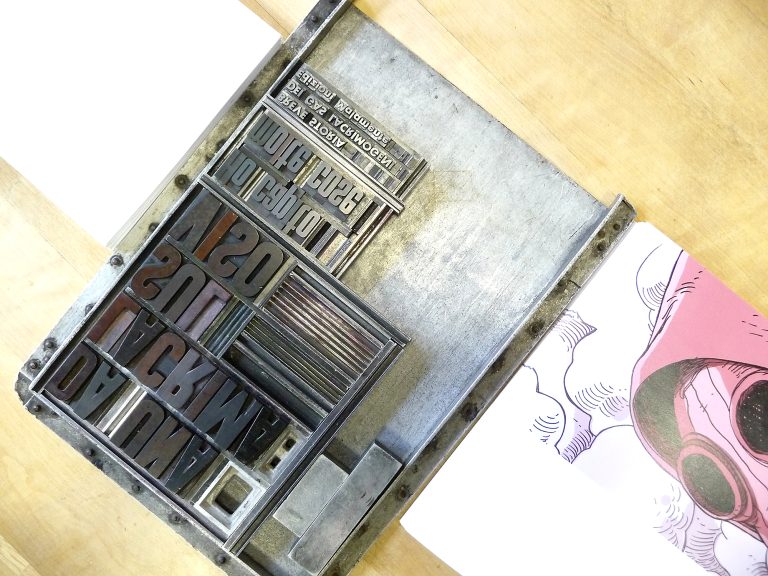Working Class
Alla fine del 2019, poco prima di spostarmi e aprire la private press, decisi di pubblicare un secondo libro di cut-up – ideale proseguimento di Freedom – che tenesse insieme dei brevi frammenti con un racconto a immagini in grado di usare i caratteri in modo diverso. In quel periodo stavo leggendo vari testi riguardanti la classe operaia, da quelli di Alberto Prunetti ai romanzi di Jack London, passando per la collana Working Class – curata dallo stesso Prunetti. Le lotte, i ragionamenti e, soprattutto, la solidarietà & l’appartenenza di classe mi colpirono molto, le stesse che avevo potuto vedere, in minima parte (eravamo già negli sfavillanti ’90), quando lavoravo all’interno delle fabbriche e, adesso, in esperienze come Rimaflow e nel collettivo di fabbrica degli operai Gkn.
Decisi quindi che la Working Class sarebbe stata il tema e l’ispirazione per la nuova pubblicazione. Soggetto egemone delle lotte novecentesche, l’unico in grado di salvare la situazione ma, dopo anni di discorsi neoliberisti, con scarsa percezione di sé. Per questo ho pensato di raccogliere e collegare insieme alcune frasi, una sorta di piccolo vademecum di possibilità. Ai testi, poi, ho aggiunto alcune composizioni astratte, un accompagnamento visivo alla lettura, in grado di darle il ritmo e aumentarne la potenza. Pagina dopo pagina i quadrati neri si riducono, finiscono nell’angolo fino a scomparire, mentre quelli rossi acquisiscono consapevolezza e organizzazione. Quello che serve.
At the end of 2019, shortly before I moved and opened my private press, I decided to publish a second cut-up book – an ideal continuation of Freedom – that would hold together short fragments with a story using types in a different way. At that time I was reading various texts about the working class, from those of Alberto Prunetti to the novels of Jack London, via the Working Class series – edited by Prunetti himself. The struggles, the reasoning and, above all, the solidarity & class membership struck me very much, the same that I had been able to see, to a small extent (we were already in the glittering 90s), when I worked inside factories and, now, in experiences like Rimaflow and in the Gkn workers’ collective.
I therefore decided that the Working Class would be the theme and inspiration for the new publication. The hegemonic subject of 20th century struggles, the only one able to save the situation but, after years of neo-liberal discourse, with little self-perception. That is why I thought of collecting and linking together a few sentences, a sort of small vademecum of possibilities. To the texts, then, I added some abstract compositions, a visual accompaniment to the reading, capable of giving it rhythm and increasing its power. Page after page the black squares shrink, end up in the corner until they disappear, while the red ones acquire awareness and organisation. What is needed.

